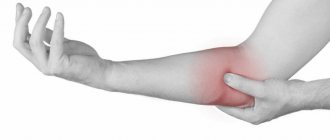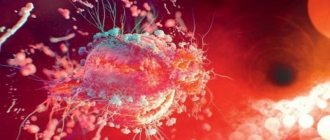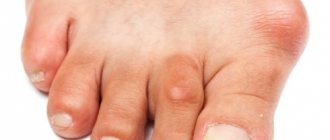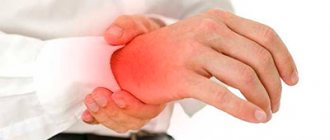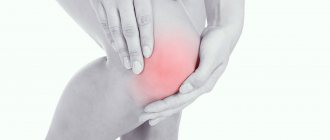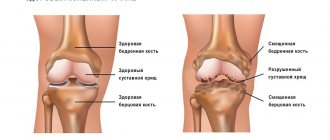What are we talking about? Briefly about the disease
Osteogenesis imperfecta (OI) is a group of genetically determined diseases characterized by increased bone fragility due to impaired collagen production.
Let's decipher:
- A group means that it is not one disease, but several, united by common features, but also having differences. At the moment, at least 15 genes are known, breakdowns in which lead to different types of disease.
- Genetically determined means that the disease is based on a breakdown in genes that occurs spontaneously or is transmitted from one or both parents. This means that no other factors - for example, bad habits and illnesses during pregnancy - affect the development of OI, and there is no fault of the parents for this disease. Mutation happens by itself, it's a lottery. In addition, this means that a person is born with OI and cannot be cured of it - until science comes up with a way to safely edit the genome of a living person. However, this does not mean that there is no treatment and patients with OI cannot lead a normal life.
- Increased bone fragility means that, depending on the type of disease, people with OI experience an average of 10 to 100 fractures in their lifetime.
- Impaired collagen production means that the disease develops due to insufficiency and disruption of the structure of the protein from which bones are built. BUT has nothing to do with calcium metabolism in the body, and treating it with calcium is pointless. It is also pointless to treat it with collagen preparations, because collagen, like any other protein, is digested in the stomach and does not reach the bones unchanged.
Osteogenesis imperfecta is one of the most common rare diseases. Occurs in one out of 12-15 thousand newborns. Many patients suffer from a mild form of the pathology, often they do not even know about their diagnosis. Depending on the type of OI, the correctness and timeliness of treatment, lifestyle can vary from completely normal to severe disability.
In addition to brittle bones, other signs are often found in various combinations in OI: short stature, bone deformities, hearing loss, damage to internal organs due to skeletal deformations or connective tissue characteristics (the lungs, cardiovascular system, eyes, teeth, etc. may suffer. ). Life expectancy and the ability to have children are not affected by the disease.
The diagnosis of OI is made clinically - based on symptoms determined during examination and questioning. Genetic testing helps confirm the diagnosis. Characteristic signs on radiographs and the absence of changes in laboratory blood tests help to make an indirect diagnosis.
People with OI are distinguished by their sharp minds, talents in various types of art, and strong character. Among people with severe forms there are famous actors, musicians, writers and philosophers, doctors and historians.
III. Forecasts
Due to the enormous individual variability of the disease, it is impossible to make general statements about what treatment and rehabilitation methods will be correct in each individual case. Some predictions can be made based on statistics for each type of OI, but no guarantees can be made regarding the number of fractures, the height of a frail person, or his mobility.
Even among “fragile” people within the same family, differences can be quite significant, and in each specific case it is recommended to seek individual advice from a specialist.
In many cases, bone fragility decreases after puberty, but may increase again after age forty, so physical activity is important throughout the life of a person with OI.
Why do we recommend treating osteogenesis imperfecta at the GMS Clinic Congenital Pathology Center?
Unique experience
The head of the Central Clinical Hospital, genetic endocrinologist Natalia Belova, has been treating children with OI for more than 30 years, orthopedist-traumatologist Vladimir Kotov for more than 25 years, pediatrician Fedor Katasonov for more than 5 years.
Natalia Belova was the first person who began to study this pathology in the USSR, she wrote articles about OI in the encyclopedia, all-Union recommendations for the treatment of OI, a protocol for the treatment of children with OI for the Ministry of Health, and is the main freelance employee of the Ministry of Health of the Russian Federation on this disease. Natalia was the initiator of the creation of a patient organization for patients with OI. Thousands of children with osteogenesis imperfecta have passed through Natalia. Over the five-year history of CVP, we have observed more than 350 patients with OI, and about 200 children from Russia, Kazakhstan, Ukraine, Belarus, Moldova, Kyrgyzstan and Tajikistan received systematic treatment. This makes CVP the largest center in Europe for the treatment of congenital bone fragility.
Comprehensive treatment
Osteogenesis imperfecta is a complex problem that affects many aspects of lifestyle.
Successful treatment is only possible with a multidisciplinary approach that combines the efforts of a team of specialists.
If at least one direction in treatment is missed, the chances of success are significantly reduced.
- The Center's pediatricians provide drug treatment - patients with OI receive drugs from the group of bisphosphonates, which strengthen bone tissue. In addition, pediatricians coordinate all types of treatment and provide adequate pediatric supervision, since clinic doctors very often disown patients with OI.
- Orthopedists and traumatologists provide adequate treatment of fractures and timely surgical correction. The Center performs almost all types of surgeries required for OI, with the exception of spinal surgeries.
- Rehabilitation specialists deal with the most important aspect of treatment - physical activation. It is known that an improvement in the quality of life and a reduction in the number of fractures is achieved only with a high level of physical activity. Rehabilitators select adequate exercises and teach parents how to do them at home.
- A psychologist is engaged in equally important work: helping with acceptance of the diagnosis, combating fears (fear of fractures is sometimes the only factor preventing treatment), motivation for physical activity and resolving any other psychological problems: family, adolescence, crisis periods of childhood, etc.
- Specialists in the selection of technical equipment help you choose the necessary equipment (crutches, walkers, chairs), most suitable for the level of physical activity and size, as well as receive maximum compensation from the state for the purchase of these equipment.
- Highly qualified specialists from GMS Clinic (ophthalmologists, ENT specialists, neurologists, etc.) help solve related health problems. All kinds of studies, even those not included in the standard of treatment for OI, but necessary for patients, are also carried out at GMS Clinic or partner clinics.
This comprehensive approach makes the CVP unique.
All doctors working within the TsVP were selected at different times by Natalia Belova based on their professional level, interest, ability to work collegiately, as well as a special medical culture that prioritizes patient care rather than formal performance of duties. Such friendly work of doctors is impossible either in government institutions due to the rigidity of the system and the lack of common interests among different participants in the process, or in other private clinics due to the narrow specificity of the disease and commercial unprofitability. The CVP team, then still small, was lucky five years ago to find a private GMS clinic that was able to find resources for the development of a commercially dubious, but socially important area. The management of the clinic created all the conditions for development, as a result of which the CVP team has tripled in five years, and the number of children undergoing treatment at the same time has at least doubled.
Correct goal setting
The goal of our treatment is not to reduce the number of fractures or increase bone density (this happens naturally in the process), but to generally improve the quality of life. We work to raise every fragile child to be a full-fledged member of society, minimally limited by their illness. We strive for our patients to receive a good education, start a family, and generally grow up as happy people.
Modern approach
The Center for Congenital Pathology GMS Clinic is the only organization in the territory of the former USSR that provides the most up-to-date approach to the treatment of OI. Many doctors and organizations trying to treat OI are still guided by the recommendations of Natalia Belova, written more than 20 years ago and hopelessly outdated.
- Modern diagnostics became possible as a result of cooperation with the Genomed laboratory, the only one in Russia that performs adequate and complete research on OI. Genetic research allows you to clarify the type of disease and choose the right treatment, which may vary depending on the type. In addition, knowledge of the broken gene helps parents decide on plans for future pregnancies. If it is necessary to eliminate the risk of reappearance of a child with a pathology, patients can use the latest reproductive technologies at the GMS IVF clinic.
- Modern drug treatment involves infusion of drugs from the group of bisphosphonates (pamidronate, zoledronate), and the treatment regimen (doses, frequency of administration, duration of treatment) is modified with the emergence of new data. In the near future, after the emergence of new research results, TsVP plans to be the first in the country to begin trial treatment with the drug denosumab, which is more effective in some rare types of OI than bisphosphonates. TsVP doctors do not use ineffective and harmful treatment methods that are still practiced in government institutions: calcium preparations, collagen, osteogenon, somatotropin, etc.
- Modern surgical treatment involves the use exclusively of intraosseous structures to fix bones after correction of deformities or fractures. Bony structures have not been used for OI all over the world for a long time, but most government institutions in the country still install bone plates, bolts and other structures that are acceptable for healthy people, but destroy the bones of our patients. In addition, the TsVP became the first institution in Russia where they began to install telescopic rods that lengthen as the child grows. This already “gold standard” of surgery for OI has been unavailable in our country for a long time and today is not used anywhere except CVP. Previously, we sent patients who required the installation of telescopic pins abroad.
- The modern approach to physical therapy involves intense exercise and an active lifestyle. Unfortunately, the level of rehabilitation in our country is quite low, and the words “therapeutic physical education” mean meaningless activities that do not really load any muscle group. Dr. Andreas Stromberger, who studied and practiced in Germany for many years, is responsible for physical therapy at the Center, and therefore it is distinguished by adequate goal setting and an individual approach. The goal of rehabilitation is not to develop muscles, but to develop skills. In the center, children who were previously encouraged to touch as little as possible learn to crawl, walk and run and expand their everyday capabilities in every possible way. The GMS Clinic rehabilitation room is equipped with sports equipment, exercise equipment and a new effective means of rehabilitation - the Galileo vibration platform.
- A modern approach to hospitalization means the most comfortable stay in the GMS Clinic hospital. Our patient is in a room with one of the close adults (mom, dad, grandmother, sister). There are one or two families in wards equipped at the level of European clinics. Polite and highly qualified nurses, many of whom studied abroad, have extensive experience working with OI, in which, for example, due to the characteristics of the vessels, it can be difficult to place a venous catheter. The wards have TVs and air conditioning, food is served by maids - you can forget about hospital canteens. The hospital has free access for visitors around the clock, and patients themselves are free to walk around the city when they do not have procedures scheduled.
Continuous learning
Doctors from the Center for Veterinary Medicine are the only permanent representatives of Russia at international conferences on osteogenesis imperfecta, which are held every three years. This is the main world event where all the leading experts on fragile bones gather - geneticists, surgeons, pediatricians, rehabilitation specialists, representatives of patient organizations, etc. This is where you can learn about the latest trends, new research and other news related to OI. The last conference was held in 2021 in Oslo, and this was the fourth conference in which CVP doctors participated. This time our delegation included four people: Natalia Belova, Fyodor Katasonov, orthopedic surgeon Alexey Rykunov and geneticist of the Genomed laboratory Fyodor Konovalov, together with whom the TsVP staff prepared three poster presentations. In addition to ongoing training, participation in conferences allows CVP doctors to maintain international relations, thanks to which, in particular, our patients were previously operated on abroad.
Concern
Patients of the Central Hospital always remain our patients, even when they go home between hospitalizations or outgrow childhood. We know how difficult it is to get adequate medical care in the community, when any problem is written off as a rare diagnosis and they don’t want to deal with it, when they offer inadequate treatment methods or a protective lifestyle. Therefore, we are always in touch with our patients. We also understand the need for normal education, encourage our patients to enroll in schools and kindergartens and fight discrimination against them, sometimes even with the help of journalists and lawyers. We do not ignore any aspect of life, be it difficult relationships in the family, difficulties in obtaining an education or the lack of an accessible environment in the place of residence, and we do everything in our power to help.
Availability
Treatment at the Congenital Pathology Center is free for patients.
Of course, it is impossible to organize a free service in a private clinic, but charitable foundations pay for our patients, thanks to the program organized by Dr. Belova. Thus, patients only need to pay for travel. Funds (primarily Rusfond) pay for course treatment and operations, including abroad, and we also, if possible, look for funds for special equipment (walkers, chairs) and even for legal assistance. Expensive genetic research is also paid for by philanthropists. Thanks to this, treatment in a central hospital is cheaper than even in “free” medical institutions, where you will be asked to pay for genetics, or buy a drug, or leave gratitude to the doctor or nurse for a more polite attitude.
Who pays for treatment
The drugs, like other treatment options, are available through compulsory medical insurance. But for this you need to undergo an examination and have a medical certificate.
Elena Meshcheryakova
You can receive medications prescribed from the federal center for free. They themselves are relatively inexpensive: one dropper costs about 30 thousand rubles. Considering that they are done to children two to four times a year, and to adults once every 12 months, this is quite affordable for the region’s budget.
But at the same time, there are quotas for treatment, which are not enough for everyone. Therefore, often medical care, such as orthopedics, is paid for by charities.
In our country, difficulties also arise due to the fact that medications are often prescribed not by trade name, but by active substance. Therefore, a generic equivalent of the main type of medication with less effectiveness can be issued at your place of residence. And here it is important that the child’s parents or the adult patient himself do not give up, but seek the right remedy.
Are there any prospects?
We, the doctors of the Center for Congenital Pathology GMS Clinic, would really like to see osteogenesis imperfecta treated in a modern and effective manner throughout the country. With the current trend, we will soon have more patients than we can properly treat, and we will have to expand our staff again. We would like to train specialists from other cities and transfer some of our patients to them for treatment. But, unfortunately, today our Center has no alternative in this direction. The few other institutions that try to deal with this disease are severely deficient in one aspect or another, and sending patients there for the time being would be to their detriment. We constantly receive patients who received care in government institutions, and we have to correct other people’s mistakes and regret the lost time and missed opportunities.
If you know doctors who are ready to adopt our experience, study from foreign literature, who are not indifferent to the global result of their treatment, who are ready to introduce new methods of therapy, surgery, rehabilitation, feel free to give them our contact information. We want there to be more centers like ours. Patients fly to us from the Far East and Yakutia. It would be much easier if they did not have to spend money on moving across the country, but rather travel, for example, to Novosibirsk or Yekaterinburg. But there are no alternatives to our center, even in Moscow.
If you know people or organizations that are ready to pay for our patients’ travel, technical equipment or accommodation in Moscow while they undergo a rehabilitation course at our Center (funds pay for treatment, but not rehabilitation courses after fractures or operations), share information about us with them. We will help them provide targeted assistance; we have lists of children who need this help more than others.
If you know children with brittle bones whose parents may not even know that the disease can be successfully treated, tell them about us. We will be happy to invite them to a consultation and, if necessary, will take them into our treatment program.
Diagnosis of the disease. Forecasts and prevention of the disease
Most patients with the congenital form of osteogenesis imperfecta die in the first days and months after birth. The result of death is frequent and multiple fractures, numerous sepsis, complications associated with pneumonia and otitis media. In later life, the likelihood of fractures is significantly reduced, but the quality of life of patients continues to be unsatisfactory. Prevention of pathology consists in proper care of a sick child, in providing, at a completely different level, with everyday life problems. Osteogenesis imperfecta
at a later age is associated with effective prevention, including rehabilitation courses and prevention of household injuries.
All patients diagnosed with osteogenesis imperfecta
require constant medical consultation, and families with patients with this diagnosis are subject to genetic control.
Diagnosis of the disease is based on the study of the clinical manifestations of the pathology. The diagnosis is made as a result of a consultation of specialist doctors, including, in addition to an orthopedist, the presence of a geneticist and an endocrinologist. Laboratory tests conducted to exclude other diseases with similar symptoms can provide comprehensive data for subsequent treatment of the pathology. The main laboratory studies currently carried out are:
- molecular analysis of the patient’s blood and saliva for DNA and gene composition;
- biochemical analysis of collagen for its qualitative composition;
- additional biopsy of skin areas.
As an important provider of data on the presence of pathology, the following instrumental diagnostic methods are used:
- X-ray examination of the main parts of the patient’s skeleton;
- densitometry studies;
- bone biopsy studies.
In the first case, the data obtained during the study will help doctors identify hidden fractures, osteopenia, curvature of tubular bones, and other disorders in the structure of the skull and spine in the patient. Thanks to densitometry studies, doctors are able to determine the mineral composition of bone tissue, which determines bone density and stiffness. Biopsy studies are carried out to exclude cancer in bone tissue. It should be noted that the likelihood of developing a malignant tumor at the sites of bone fusion after numerous fractures in patients diagnosed with osteogenesis imperfecta
, as a rule, increases.
